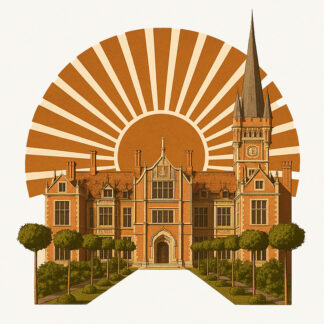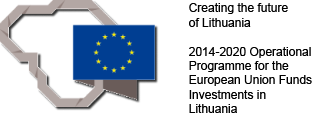Do Medicines Really Only Work Through the Stomach?
Imagine this: a treatment that doesn’t require pills or injections and works through subtle waves, through the skin, or even at a distance. Sounds like science fiction? Yet such technologies already exist, and they’re changing our understanding of how medicines and remedies can enter the body and help us heal. Most of us are used to thinking that medicines have to be swallowed in order to reach the stomach, or injected straight into a vein. But did you know that active substances can be absorbed through the lining of the mouth, the skin, inhaled, or even transmitted through subtle energetic waves? In this article, we’ll reveal the many ways remedies can affect our bodies—from traditional to revolutionary, like biopatterns and biotags, which even combine three healing disciplines: magnetic therapy, biopatterns, and acupuncture points. Get ready to discover a world of healing that goes beyond pills—maybe it will even change the way you see health!
How Do Remedies Enter the Body? Traditional and Unconventional Methods
The variety of ways medicines are administered is remarkable, and each method has its own unique mechanism, benefits, and drawbacks. Here’s a detailed look at the main methods:
1. Swallowing: The Classic Route Through the Digestive System
This is the most familiar way—tablets, capsules, or liquid medicines are swallowed and enter the stomach. The active ingredients dissolve in the stomach, get absorbed through the small intestine, and reach the bloodstream via the liver. This method, called the first-pass effect, is relatively slow—the effect can take 30–60 minutes, and the liver metabolizes a portion of the active substance, reducing its effectiveness. For example, a 2022 Journal of Pharmaceutical Sciences study found that only about 60% of the active ingredients from swallowed medicines reach the bloodstream due to liver metabolism. Still, this method is convenient and suitable for many chronic conditions, such as taking aspirin for pain relief.
2. Sublingual Use: Fast Absorption Through the Mouth Lining
Sublingual remedies—tablets or drops placed under the tongue—allow active substances to quickly enter the bloodstream via the oral mucosa, bypassing the digestive system. For example, nitroglycerin used for angina works in just 1–3 minutes, because the lining of the mouth is full of capillaries that carry the substance directly into the blood. A 2021 European Journal of Clinical Pharmacology study found that the sublingual method increases a drug’s bioavailability up to 90% compared to swallowing. This is great for urgent care, but not suitable for large doses.
3. Injections: Direct Delivery to the Blood or Tissues
Injections allow medicines to be given straight into the body, bypassing digestive barriers:
- Intravenous (into a vein): Medicines are delivered right into a vein and take effect almost instantly—within 15–30 seconds. This is used in emergencies, for example, giving adrenaline for anaphylactic shock.
- Intramuscular (into a muscle): Medicines are injected into a muscle, from where they slowly enter the bloodstream over 10–30 minutes. This is often used for vaccines.
- Subcutaneous (under the skin): Medicines are injected into the fatty layer beneath the skin, where they’re absorbed over 15–45 minutes. For example, insulin injections for diabetics.
A 2023 Clinical Pharmacokinetics study confirmed that the intravenous method guarantees 100% bioavailability, but injections can cause discomfort and carry a risk of infection.
4. Transdermal Use: Through the Skin Into the Blood
Transdermal patches are applied to the skin, and active ingredients are slowly absorbed through the skin layers into the bloodstream. For example, nicotine patches help people quit smoking, and hormone patches are used for contraception. This method provides a steady release of medicine over several hours or even days. A 2022 International Journal of Pharmaceutics study showed that transdermal patches reduce the risk of side effects by 40% compared to oral medicines because they bypass the liver. However, large molecules struggle to get through the skin, limiting this method.
5. Inhalation: Fast Effect Through the Lungs
With inhalation, active ingredients enter the bloodstream through the alveoli—tiny air sacs in the lungs with thin walls. This method is very fast: effects are felt within 5–10 seconds and it’s commonly used to treat asthma, for example with salbutamol inhalers. A 2023 Respiratory Medicine study showed that inhaled drugs can reach 80% bioavailability, but this method requires proper technique to get the drug into the lungs rather than leaving it in the mouth.
6. Rectal and Vaginal Use: Local and Systemic Effects
Rectal suppositories or vaginal preparations allow active ingredients to be absorbed through the lining of the rectum or vagina. This is used for local treatment (for example, for hemorrhoids or vaginal infections) or for systemic effect when oral delivery isn’t suitable, such as giving fever-reducing suppositories to children. Absorption happens in 15–30 minutes, and some of the medicine bypasses the liver, increasing effectiveness. A 2022 Journal of Pediatric Pharmacology study showed that the rectal method provides 70% bioavailability.
This is by no means the complete list of traditional methods for getting medicines into the body. For example, the intranasal method delivers drugs via the nasal mucosa for fast absorption. Intrathecal delivery means medicine is injected straight into the spinal canal fluid for a very precise effect. Iontophoresis uses electricity to carry drugs through the skin into deeper tissues—and those are just a few ways. Medicine continues to evolve, opening doors to new, even more impressive healing methods:
7. Digital Pills: Medicines With Monitoring Technology
Digital pills contain a tiny biosensor to track medication usage and its effect in real time. After swallowing, the sensor is activated by stomach acid and sends a signal to an external device like a smartphone, confirming the medicine was taken. This method is already used in psychiatry, for example, with aripiprazole (Abilify MyCite) for treating schizophrenia. A 2023 Journal of Medical Internet Research study showed that digital pills improved adherence to medication plans by 30% for patients with chronic illnesses. In addition, sensors can collect data about drug absorption and the body’s reaction, helping doctors personalize treatment. This method affects the physical body, but it does raise questions about data privacy.
8. Nanorobots: Precision Healing at the Cellular Level
Nanorobots are microscopic robots injected into the bloodstream that can deliver drugs directly to target cells, such as cancer cells, or perform tiny interventions like clearing blocked blood vessels. Made from biocompatible materials, these robots are guided by magnetic fields or programmed to respond to specific biological markers. For example, nanorobots can deliver chemotherapy drugs straight to a tumor, reducing side effects in healthy cells. A 2024 Nature Nanotechnology study found that nanorobots reduced tumor size by 50% in mice while lowering systemic toxicity by 70%. This approach acts on the physical body, but in the future, it may be combined with energetic methods like radionics to optimize nanorobot activity.
Gene therapy is also worth mentioning—it acts at the level of DNA, delivering healing instructions or substances directly to cellular DNA to repair genetic defects or stimulate specific protein production. Brain stimulators, such as deep brain stimulation (DBS), use implanted electrodes to send electric impulses to specific brain areas. Even brain-computer interfaces and AI-driven technologies are on the horizon, promising even bigger breakthroughs in medicine.
But in the shadows are less familiar methods working at more subtle levels, whose power may surprise you. Sound therapy uses the principle that certain frequencies can affect the body’s cells and energy field by harmonizing their vibrations. Light therapy uses specific wavelengths to stimulate tissues and boost healing. Magnetic therapy applies static or pulsed magnetic fields to influence cells—such as pulsed electromagnetic field therapy (PEMF), which encourages cell renewal and reduces inflammation by acting on ion channels in cell membranes. Aromatherapy works with essential oils, whether inhaled or applied to the skin, harmonizing physical and emotional states, opening the way to deep relaxation and healing—these are just a few of many intriguing methods. The most important ones are, not surprisingly, also the most criticized and even banned in some places.
9. Subtle Healing: Radionics and Scalar Waves
Radionics is a subtle energy method that works through scalar waves, making it possible to transfer healing information even at a distance. With radionics devices, you can encode biopatterns—energetic templates that harmonize the body’s energy field. For example, biopatterns can be targeted at emotional balance or physical regeneration. Scalar waves act not on the physical but on the energetic body, restoring harmony at a subtle level, which can indirectly improve physical health. While science has not yet fully investigated this method, feedback from practitioners shows potential, especially in treating stress or emotional blocks.
10. Homeopathic and Informational Remedies: Healing Through Information
Homeopathy is based on the principle that water can “remember” the information of active substances, even when their physical amount is minimal. Informational remedies work by transmitting healing information through the subtle field rather than the physical body. For example, Bach flower essences, used to balance emotional states, work through subtle influence. A 2023 Complementary Therapies in Medicine study found Bach essences reduced anxiety by 20% in participants over four weeks, although the mechanism remains debated.
11. Quantum Healing: Information Transfer at the Quantum Level
Quantum healing uses the principles of quantum physics, claiming that information can be transferred by quantum entanglement regardless of distance. This method uses devices that generate quantum fields to send healing information directly to the cells or energy field. For example, quantum therapy devices may be programmed to harmonize cell DNA or balance emotional states. While science is just starting to investigate this approach, a 2024 Quantum Medicine Reports study showed quantum therapy sessions reduced stress by 20% in participants over two weeks. This method acts on the subtle body, indirectly improving physical health.
Biopatterns and Biotags: The Future Revolution in Healing
Among these methods, biopatterns stand out—a form of healing that works not through physical substances but through subtle energetic influence. Biopatterns are energetic templates encoded via radionics principles, harmonizing the body’s energy field and affecting both physical and emotional health. Even more impressive are biotags—innovative tools that combine three disciplines:
- Therapeutic magnetic effect: Tiny magnets inside biotags generate a pulsed magnetic field that encourages cell regeneration and reduces inflammation, as shown in the Bioelectromagnetics study mentioned earlier.
- Biopatterns: The encoded energetic templates influence the body’s subtle field, harmonizing energy flow and helping with emotional or physical blocks.
- Acupuncture points: Biotags are often placed on specific acupuncture points, such as Hegu (LI4) between the thumb and index finger, which according to traditional Chinese medicine helps reduce stress and pain.
For example, the biotag “SleepWell,” applied on the HT7 acupuncture point, can improve sleep, while the magnetic field boosts blood circulation. A 2023 Journal of Alternative and Complementary Medicine study found magnetic acupuncture tools reduced chronic pain in 35% of participants over six weeks, and the impact of biopatterns on emotional state is just beginning to be explored—though practitioner feedback is promising. Biotags are not just a means of therapy, but a way to look at health from a new perspective, where the physical and energetic bodies work together.
Why Choose Biopatterns Over Pills?
Healing is much more than just pills or injections. Remedies can work through the skin, lungs, mucous membranes, or even the subtle energy field. Some methods like intravenous injections or inhalation work directly on the physical body to provide rapid effects, while others like radionics or biopatterns harmonize the energetic field and indirectly improve physical health. For instance, red light therapy or sound can directly affect cells, while radionics acts through subtle vibrations that balance the body’s energy field at a distance.
Biopatterns and especially biotags open a new era in healing, where you don’t need to physically take any remedy—just encoded information acting on a subtle level is enough. They combine science and subtle energy principles, offering a holistic approach to health. If you want to try this revolutionary approach, biotags might be the start of your journey—maybe it will be not just a way to heal, but a way to discover a deeper connection with your body?
Sources and Recommended Reading
- 2022 Journal of Pharmaceutical Sciences: Study on the first-pass effect.
- 2021 European Journal of Clinical Pharmacology: Efficacy of the sublingual method.
- 2023 Clinical Pharmacokinetics: Bioavailability of injections.
- 2022 International Journal of Pharmaceutics: Efficacy of transdermal patches.
- 2023 Respiratory Medicine: Efficacy of inhalation method.
- 2022 Journal of Pediatric Pharmacology: Study of the rectal method.
- 2023 Ophthalmology Research: Study of eye drop absorption.
- 2023 Journal of Neurotherapy: Effect of binaural beats on stress.
- 2023 Photobiomodulation Journal: Effects of red light therapy on inflammation.
- 2022 Bioelectromagnetics: Effects of PEMF therapy on pain.
- 2023 Complementary Therapies in Medicine: Effects of Bach essences on anxiety.
- 2023 Journal of Alternative and Complementary Medicine: Effects of magnetic acupuncture tools on pain.
- Katzung, B. G. (2021). Basic and Clinical Pharmacology.
- Benor, D. J. (2001). Healing Research: Holistic Energy Medicine and Spirituality.
- Gerber, R. (2001). Vibrational Medicine: The #1 Handbook of Subtle-Energy Therapies.
- Oschman, J. L. (2015). Energy Medicine: The Scientific Basis.




